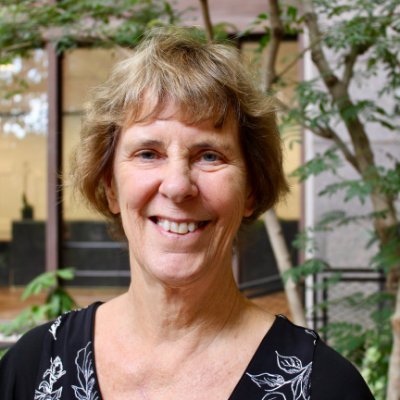This cluster represents the intersection of two key research areas focused on health and food security, which are associated with water. An essential aspect of this cluster is to frame questions around sustainability, attuned to the fact that what scholars think the community needs and may be different from what they want, which leads to ultimately unsuccessful interventions. Therefore, there is a clear need to inform the development of technologies and programs taking into consideration social and economic factors. The cluster will rely on lessons learned from an ongoing UConn National Science Foundation-funded PIRE (Partnerships for International Research and Education) project in Ethiopia; researchers from different disciplines have successfully collaborated to build a project that aims to understand how the relationships between scientists, farmers, water managers, and other authorities influence the production, dissemination, and outcome of new scientific knowledge.
Affiliated Faculty
Publications
Willen, Sarah S., Kristina Baines, Michael Ennis-McMillan. (Forthcoming 2023). “Cultivating Voice and Solidarity in Times of Crisis: Ethnographic Online Journaling as a Pedagogical Tool.” Culture, Medicine, & Psychiatry. Culture, Medicine, and Psychiatry.
McCutcheon, J. R., & Mauter, M. S. (2023). "Fixing the Desalination Membrane Pipeline." Science, 380, 242-244. DOI: 10.1126/science.ade5313
Mason, K.A., S.S. Willen, & H.M. Wurtz, guest eds. (2022) “Journaling & Mental Health During COVID-19: Insights from the Pandemic Journaling Project.” Social Science & Medicine—Mental Health. 2.
Willen, Sarah S. (2022). “Languishing in Critical Perspective: Roots and Routes of a Traveling Concept in COVID-19 Times.” Social Science & Medicine—Mental Health. 2: 100128.
Kalinowski, Jolaade,Heather M. Wurtz, Madeline Baird, & Sarah S. Willen. (2022). “Shouldering the load yet again: Black women's experiences of stress during COVID-19.” Social Science and Medicine—Mental Health. 2: 100140.
Wurtz, Heather M., Sarah S. Willen, Katherine A. Mason. (2022). “Introduction: Journaling and Mental Health during COVID-19: Insights from the Pandemic Journaling Project.” Social Science & Medicine—Mental Health. 2: 100141.
Willen, Sarah S. & gJennifer Cook. (2022). “Must the Tired and Poor ‘Stand on Their Own Two Feet’? Tools for Analyzing How Deservingness is Reckoned.” In Nadia El-Shaarawi and Stéphanie Larchanché (2022), eds. Migration and Health: Challenging the Borders of Belonging, Care, and Policy. New York: Berghahn.
McCutcheon, J. R. (2019). "Avoiding the Hype in Developing Commercially Viable Desalination Technologies." Joule, 3(5), 1168-1171.https://doi.org/10.1016/j.joule.2019.03.007
Sarah S. Willen. (2022). “Flourishing and Health in Critical Perspective—An Invitation to Interdisciplinary Dialogue.”Social Science and Medicine—Mental Health. https://www-sciencedirect-com.ezproxy.lib.uconn.edu/journal/ssm-mental-health/special-issue/10MQ4BLM58B
Chapman Audrey R. & Ahmed A. Karim (2021). “Climate Justice, Human Rights, and the Case for Reparations,” Health and Human Rights Journal, 23 (2): 81-95.
Willen S.,Walsh C & Williamson A. (2021). “Visualizing Health Equity: Qualitative Perspectives on the Value and Limits of Equity Images.” Health Education & Behavior. 48(5) 595–603.
Willen S, Williamson A.F, Walsh C. , Hyman M, Tootle W (Jr). (2022) “Rethinking Flourishing: Critical Insights and Qualitative Perspectives from the U.S. Midwest.” Social Science and Medicine—Mental Health.
Willen, S. S. (2019). “Health Is a Human Right—at CDC?” Health and Human Rights Journal, 21(1), 163–177. Retrieved from https://www.hhrjournal.org/2019/06/health-is-a-human-right-at-cdc/
Willen, S. S. (2019). “Invoking Health and Human Rights in the United States: Museums, Classrooms, and Community-Based Participatory Research0.” 21(1), 157–162. Retrieved from https://www.hhrjournal.org/2019/06/introduction-invoking-health-and-human-rights-in-the-united-states-museums-classrooms-and-community-based-participatory-research/
McGinnis, R.L., Reimund, K.K., Ren, J., Xia, L., Chowdhury, M.R., Sun, X, Abril, M., Moon, J.D., Merrick, M.M., Park, J., Stevens, K.A., McCutcheon, J.R., Freeman, B.D. (2018). Large scale polymeric carbon nanotube membranes with sub-1.27 nm pores.” Science Advances 4, e1700938
Xia, L., Andersen, M.F., Nielsen, C.H., McCutcheon, J.R. (2017). Novel Commercial Aquaporin Flat-sheet Membrane for Forward Osmosis.Industrial & Engineering Chemistry Research 56, 11919-11925.
Mellor, J., Kumpel, E., Ercumen, A., & Zimmerman, J. (2016). Systems Approach to Climate, Water, and Diarrhea in Hubli-Dharwad, India.Environmental science & technology, 50(23), 13042-13051.
Kirchhoff CJ, Lara-Valencia F, Brugger J, Mussetta P, Pineda-Pablos N. (2016). “Towards joint consideration of adaptive capacity and water security: Lessons from the arid Americas.” Current Opinion in Environmental Sustainability, 21: 22-28.
Kalcic M, Kirchhoff CJ, Bosch N, Muenich R, Murray M, Gardner J, Scavia D. (2016). Engaging Stakeholders to Define Feasible and Desirable Agricultural Conservation in Western Lake Erie Watersheds. Environmental Science & Technology, 50(15), 8135-8145.
Azage, M., A. Kumie, A. Worku, & A.C. Bagtzoglou. (2016).Childhood Diarrhea in High and Low Hotspot Districts of Amhara Region, Northwest Ethiopia: A Multilevel Modeling, Journal of Health, Population and Nutrition, 35(13): DOI 10.1186/s41043-016-0052-2.
Azage, M., A. Kumie, A. Worku, and A.C. Bagtzoglou. (2015). Childhood Diarrhea Exhibits Spatiotemporal Variation in Northwest Ethiopia: A SaTScan Spatial Statistical Analysis, PLOS ONE, 10(12): DOI 10.1371/ journal.pone.0144690.
Mellor, J., Abebe, L., Ehdaie, B., Dillingham, R., & Smith, J. (2014). Modeling the sustainability of a ceramic water filter intervention. Water research, 49, 286-299.
Butler, E., Silva, A., Horton, K., Rom, Z., Chwatko, M., Havasov, A., McCutcheon, J.R (2013). Point of Use Water Treatment with Forward Osmosis for Emergency Relief, Desalination 312, 23-30.
“A new approach to social resilience through landscape architecture,” https://phys.org/news/2018-05-approach-social-resilience-landscape-architecture.html
Mellor, J. E., Smith, J. A., Learmonth, G. P., Netshandama, V. O., & Dillingham, R. A. (2012). “Modeling the complexities of water, hygiene, and health in Limpopo Province, South Africa.” Environmental science & technology, 46(24), 13512-13520.
Mellor, J. E., Smith, J. A., Learmonth, G. P., Netshandama, V. O., & Dillingham, R. A. (2012). Modeling the complexities of water, hygiene, and health in Limpopo Province, South Africa. Environmental science & technology, 46(24), 13512-13520.
Hossain, F., A.C. Bagtzoglou, N. Nahar & M.D. Hossain. (2006). Statistical Characterization of Arsenic Contamination in Shallow Wells of Western Bangladesh. Hydrological Processes, 20(7): 1497-1510.
Hossain, F., J. Hill, & A.C. Bagtzoglou. (2007). Geostatistically Based Zonal Management of Arsenic Contaminated Ground Water in Shallow Wells of Bangladesh. Water Resources Management, 21(7): 1245-1261.












